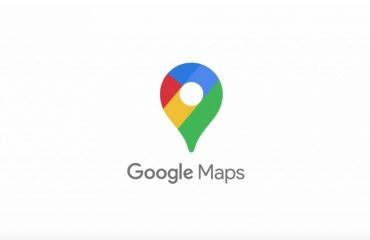We are fastly approaching the end of another year affected by COVID and while many are happy to see a return to normal on the horizon, we still have some way to go, with all the economic impacts of the pandemic that will probably resound over the course of decades and in various ways.
This will also have implications for digital marketing, with pandemic-induced blockages changing online behaviors and triggering all the new trends – such as social audio, the rapid growth of e-commerce, and more. There is also home office work and the migration to hybrid work models, which will also impact a wider digital connection. All of these elements will play a role in what’s to come in the social media space and specifically on major platforms.
So, what to expect to see on Facebook, Instagram, TikTok and LinkedIn?
Here is a wide view of each platform and main trends that you can expect for the next 12 months.
Do you want to learn more about social media? Access our blog
Facebook remained at the top of the social media pile in 2021, with its 2.9 billion active users surpassing all others and forming the largest interconnected network of human beings ever created.
The platform may be losing touch with younger audiences, but it also continues to invest in expanding into markets, offsetting any major declines in usage, while also continuing to add new ad tools and business options to build a more complete platform and make it easier for the next stage of brand connection.
Here are the main development elements for the Social Network.
Focus on e-commerce
Facebook made a big push into e-commerce at the start of the pandemic, with the introduction of Facebook and Instagram Stores, providing an additional way for retailers to connect with their audiences.
In-stream purchases have since become a key focus for the platform, and by 2022 you can expect to see Facebook expand this even more with more buyable posts, simplified payment processes (potentially through the development of Facebook Pay and its own digital currency Diem), improved product discovery and more alerts for in-stream purchasable products.
Live shopping will also be a key focus element. It has become a key trend in China, with the value of China’s live trading market rising by 280% between 2017 and 2020, and now on track to become a $423 billion market by the end of next year.
Given this, you’ll see even more shopping tools slowly merging into the Facebook experience over time as it works to integrate more utility into the platform to counter likely losses in ad spending.
The platform continues to chase trends, whether they originate from Snapchat or TikTok, with different levels of success, and remains popular with younger users. What to expect for IG in 2022?
Buy, Buy, Buy
E-commerce is the main focus on Instagram and makes all posts in the app buyable. The more shopping options Instagram can create, the more it can take advantage of regular usage and get users used to spending.
Ideally, Instagram wants every item in every post to be buyable, or at least capable of driving product discovery, and is working on object identification tools, static images and videos to facilitate just that.
You can expect to see more shopping options being tested in IG throughout the year, including advanced product search by image, product discovery panels in the main feed, and a big boost in live shopping, the same as Facebook.
This will also provide more monetization paths for creators and create a new focus of use for the app in developing markets.
Variable focus
Soon, Instagram will give users the option to open the app to their latest Stories or Reels, as opposed to the traditional feed of image and video posts
Video engagement is already dominant on the platform, while Reels is its fastest growing element. On the face of it, it makes sense for Instagram to put more focus on these formats, and we hope to see it first start with a Stories/Reels home screen option, before eventually completely retiring from the traditional feed.
Users could still post images and photos in this new model, but you would simply share them in Stories, which would remain in your profile by default. So you would open up to a variable Stories/Reels feed, leaning towards the engagement of both.
That’s a big step from the app’s origins, but broader user behaviors point to them as the future, and if Instagram is willing to stay in touch, it needs to move away from its original focus.
E-commerce would be the only area where traditional static posts are used.
Learn all about digital, click here.
TikTok
TikTok continues to grow and looks set to become part of the broader social landscape – and as such a key consideration for all digital marketers.
Here’s what you can expect from TikTok next year.
Monetization
Although TikTok continues to expand and now exceeds one billion active users, its main challenge still lies in effective monetization, both for the platform itself and for its main creators. If creators can’t make money on the app, they’ll find other platforms that will reward them for their efforts, with direct monetization into longer videos – through ads – a much easier and equitable process in this regard.
TikTok can’t compete with this kind of direct revenue generation based on the performance of each individual video, so it needs to make e-commerce and brand partnerships as easy as possible in order to maximize its earning potential.
The platform is already working on it, with several ecommerce tests and its marketplace to facilitate sponsored content, and you can expect to see even more of those options coming to the app by 2022.
This is a pretty safe prediction, as this is how TikTok’s parent company ByteDance monetizes Douyin, the China-specific version of TikTok. These types of e-commerce listings are now the biggest revenue booster on Douyin, and that’s exactly where TikTok is heading too, with more buying options and in-stream revenue sharing, facilitating more opportunities for creators and brands.
Live streams
TikTok is also looking to make it easier for live streaming in general in order to expand user behaviors.
You’ve probably noticed this already, with more live streams on your ‘For You’ feed, and soon they will be more from brands, about products aligned with your interests and featuring the creators you care most about to attract you.
Among major changes in the job market after the pandemic, LinkedIn looks set to become a bigger focus going forward, with the platform based on valuable treasures of career data that could eventually help guide more people towards its ideal functions.
Here’s what you can expect from LinkedIn in 2022.
Big events
LinkedIn has tried to become a major enabler of live streaming events, and you can expect this to become a significant element of the in-app experience by 2022.
While physical events will return, and many will be eager to get back to face-to-face meetings, LinkedIn will look to become a key partner for digital tie-ins, allowing more companies to expand their event audiences through online broadcasts – without having to need to set up dedicated sites for it.
Essentially, this will allow more companies to run the same types of hybrid events as big players, at a lower cost, and easier to connect with a wider audience of potential buyers and business partners through the app.
Expect to see more alerts about Linked Events in your feed and more real-time access to how they happen.
Remote recruitment
The move to telecommuting is here to stay and will become a major consideration for many brands as they assess broader economic and lifestyle benefits over time.
But within that, recruiting will face new challenges – which LinkedIn will be in a unique position to address. LinkedIn will use its unrivaled database of professional and career development insights to provide better job matches for candidates, as well as facilitate new video connection options for interviews and engagement.
The first step in this has already been taken, expanding its own video tools for live dating, and the next phase will see LinkedIn integrate more tools to improve remote recruiting and training.
These are some of the key trends you can expect to see take shape in 2022, and while it’s still difficult to predict exactly where things are going, based on the disruption of the past two years, there are some clear indicators of key trends and changes that point to the next step.
It is a time of significant change, in many ways, with many people looking to evolve and build new opportunities in the reconstruction market. This could open up important new potential for those who pay attention, and these new features will seek to align with these trends and facilitate growth.





